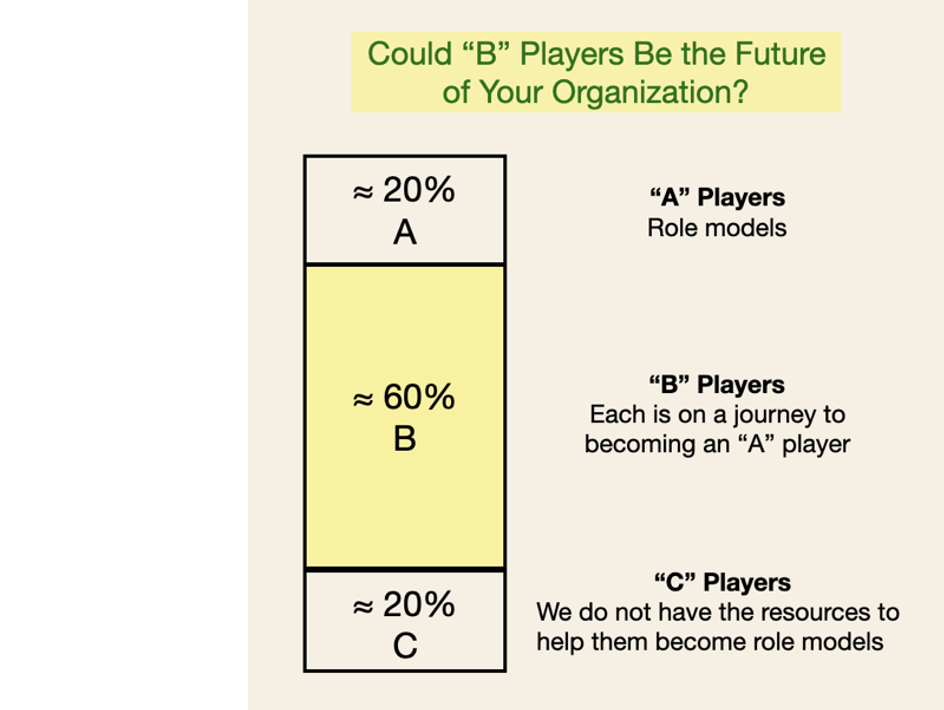Your Future Is in Your “B” Players

In our last two blog posts, we discussed evaluating your team members. Most of your team is composed of “B” players who can potentially be “A” players with experience and development. As the “Bs” are a large group with great potential, it serves us well to pay attention to their growth and development. With proper development, their impact could dramatically change the course of an organization for the better.
Now, the problem: We generally do not pay enough attention to the “B” players. They do occasionally make mistakes or hit home runs that attract some attention, but they are just solid team members plugging away and getting better.

An example of this surfaced in a staff meeting when I was with Michigan Football. Head Coach Bo Schembechler made this observation:
“You know, we have great kids on this team doing a great job, but just not starting. We spend our time giving the challenging players attention to get them better and the starters attention to prepare for the next game. But we ignore the guys who make up the core of this team. For example, our #3 Quarterback, Jim Paciorek [who also played on the Michigan Baseball team], is everything we want in a Michigan football player. Yet we give him no attention, encouragement, or support. That has to change, men! We need these players to know they are vital to our program.”
Unfortunately, a few months later, Jim left Michigan football to focus on baseball, and he went on to play professionally for several years. We’ll never know the difference that might have been made in his football journey if we had nurtured this “B” player.
A Better Way to Grow Your Team
In last week’s post, we explored FS/A’s Peak Performance Equation and its three components, which form the basis for evaluating team members. I suggest we would have assessed Jim the following way.
“A” – Organizational Culture Fit enables the flow required for sustainable Peak Performance. The team member is honoring the organization’s shared Core Identity, and there is a natural fit to align with the organization.
“B” – Job Competency Fit identifies strengths the team member needs to do their job.
“A” – Job Behavior Fit illuminates how the team member makes others in the organization feel when under pressure.
Key
“A” Players are role models of the components of the Peak Performance Equation (Organizational Culture Fit, Job Competency Fit, and Job Behavior Fit).
“B” Players can become “A” Players with experience and coaching.
“C” Players do not possess the attributes to be “A” players, or we do not have the resources to get them there.
What might have been Jim’s future and his contribution to the Michigan Football team had we given him the attention he needed and deserved?
Is it possible you have “B” players on your team who are your future, but they do not feel valued, needed, or able to make a difference because of the lack of attention?






